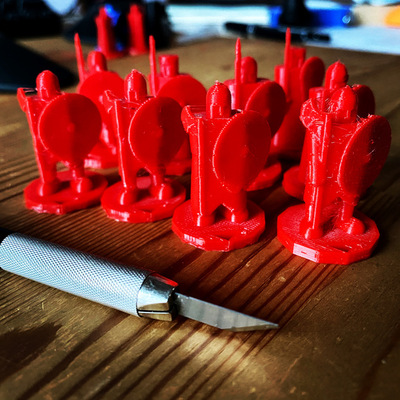
|
Bestiaire Monstrueux |
| 2021-08-30 |
Bestiaire Monstrueux
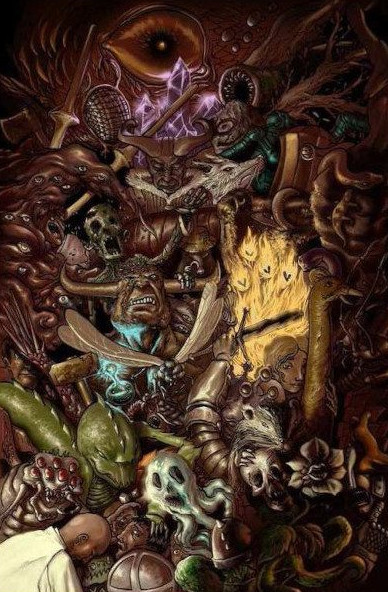
The Monstrous Bestiary is a 2008 list of eighty-two monsters for the dK system created in 2006 by Eric Nieudan and John Grümph.
The illustrator is Grégory Lowfé, and having a single illustrator makes the bestiary very consistent. The texts are very good and they are supported by the images, anything obvious from the image not being restated in the text.
The book comes as a stapled booklet slightly smaller than A5, it lays flat and quiet. The cover is a dark illustration of a crowd of two dozens of the monsters, the title of the book is relegated to the back cover.
Monsters are described with an illustration, a text block and a stat block. The stat block lists type, danger factor, level, behaviour, environment, skills, combat skills, hit points, energy points, and special abilities.
The 9 types are: beast, draconic, elemental, extra-planar, gigantic, magical, cursed, vegetal, and vermin.
The 4 behaviours are: rover, predator, stupid, and wicked. Roving creatures tend not to attack, predators will attack if they can prevail, stupid creatures are as smart as a teenager adventuring party and will attack on sight. Wicked creatures will favour other means than violence...
I don't know whether the dK system has reaction and morale rolls, but those 4 behaviours seem sufficient. Should I adapt those monsters to my tables, I'll mesh behaviours with reaction and morale rolls.
Here are a few creatures that caught my imagination. Like many of you out there, I like to collect those bestiaries, whatever the system.
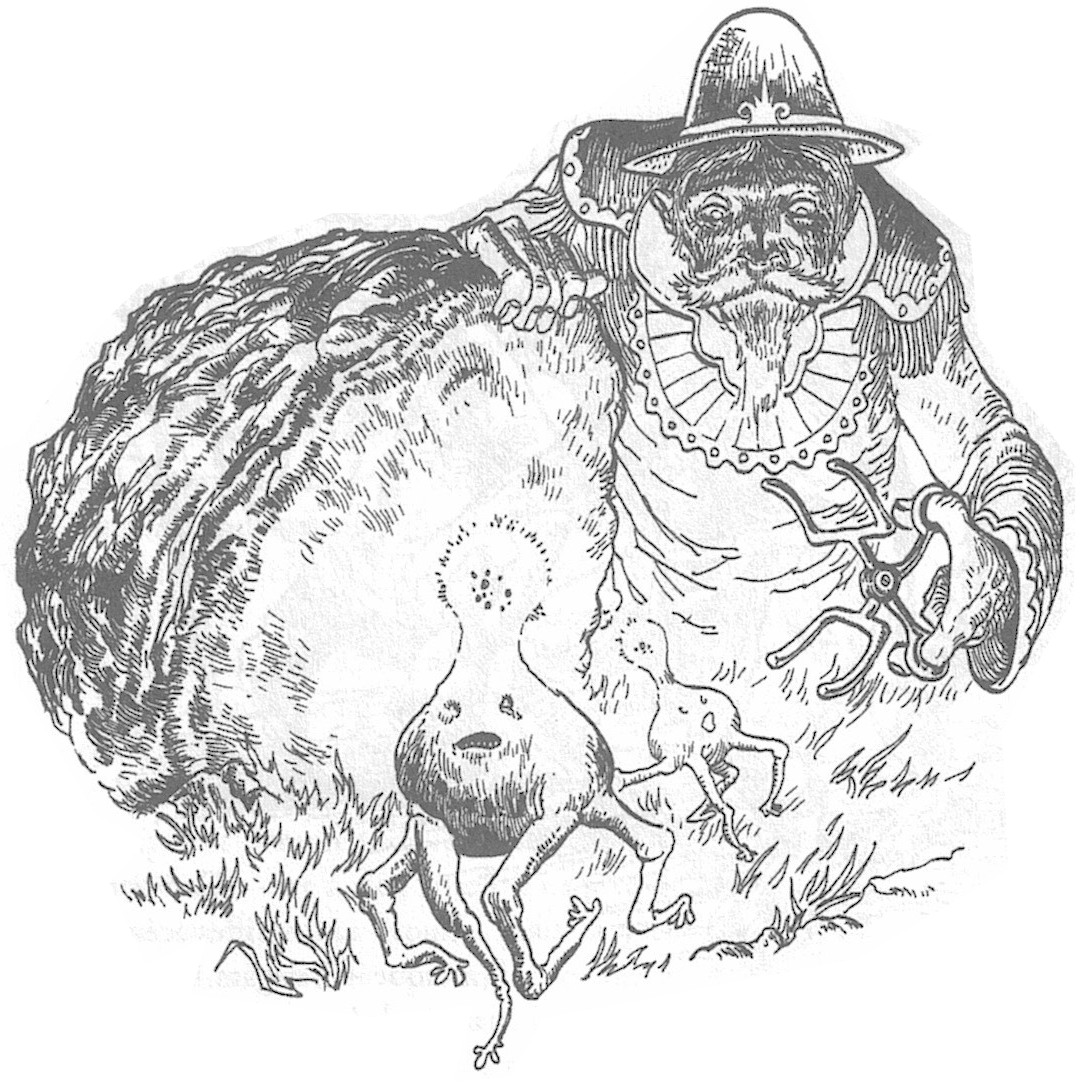 |
Incarmana danger 2, level 2, HP 12, EP 32 rover, natural magic locations Some wizards say that magical energy sometimes condensates into little creatures. Other wizards think that incarmanas are rather walking magical energy generators. They are anyway mostly found in places where magic is strong. The demand from wizards for these critters is high because they are delicious, eaten raw — they taste like honey chicken — and their consumption is rumored to raise temporarily magical abilities. |
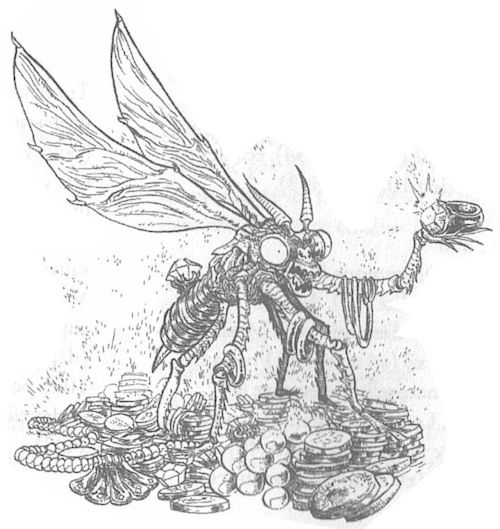 |
Dragonfly danger 3, level 5, HP 105, EP 30 dragon, rover/predator, riversides in temperate climes The dragonfly lives along rivers big or small. It's a dragon although it doesn't span more than a ten or twenty centimeters. Intelligent, not very aggressive, dragonfiles form societies of a dozen individuals with a precise organization, living of fishing and trading spider silk and mosquito eggs (a magical ingredient as important as it is hard to get by). But when the reproduction season comes, it's best to avoid them. They lay their eggs in the body of victims paralyzed by their powerful venom. When the larvae get out of their egg, they devour their host. Dragonflies always wear beautiful jewels and their nests are richly decorated with beautiful art pieces and riches, but those lairs are very had to find.
|
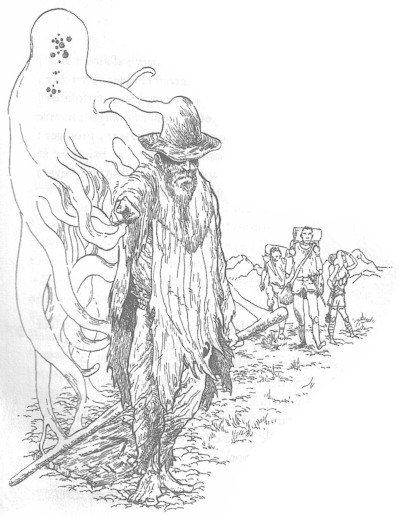 |
Strayer danger 2, level 9, HP 90, EP 36 magical, cold mountains, wicked You've been lost for a few hours in the mountain, an old beggar shows up and offers to guide you. The party is so tired that you accept. The way is long, after a while, you arrive at the entrance of a cave, it's dry and you just want to rest for a while. The beggar vanishes. Too late, the children of the strayer, a semi-ethereal creature, are already feeding on the energy of your party half alseep in the cave. |
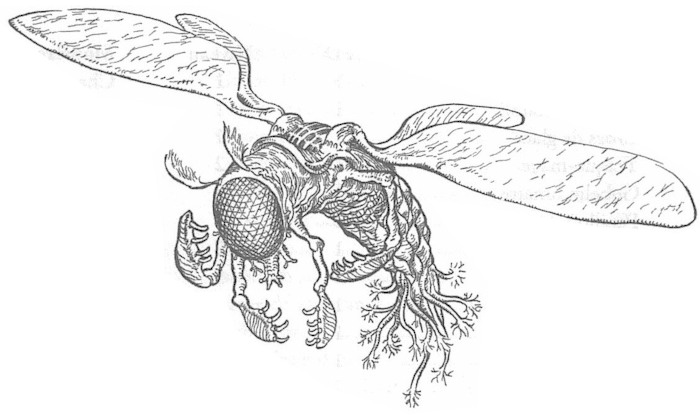 |
Mage Tracker danger 1, level 2, HP 4, EP 10 vermin, parasite They can be found close to magic users, because they feed on the energy released when a spell is cast. They are thirty centimeters long but are normally invisible. They steal 1d6 energy points each time their victim casts a spell. A successful saving throw by the caster will reveal the parasite. Once it has drained 100 points of energy, the tracker creates a copy of itself that goes on the hunt for another mage immediately. |
